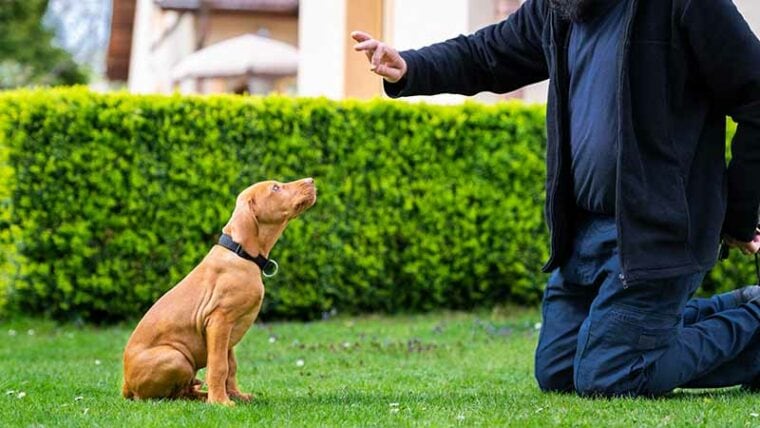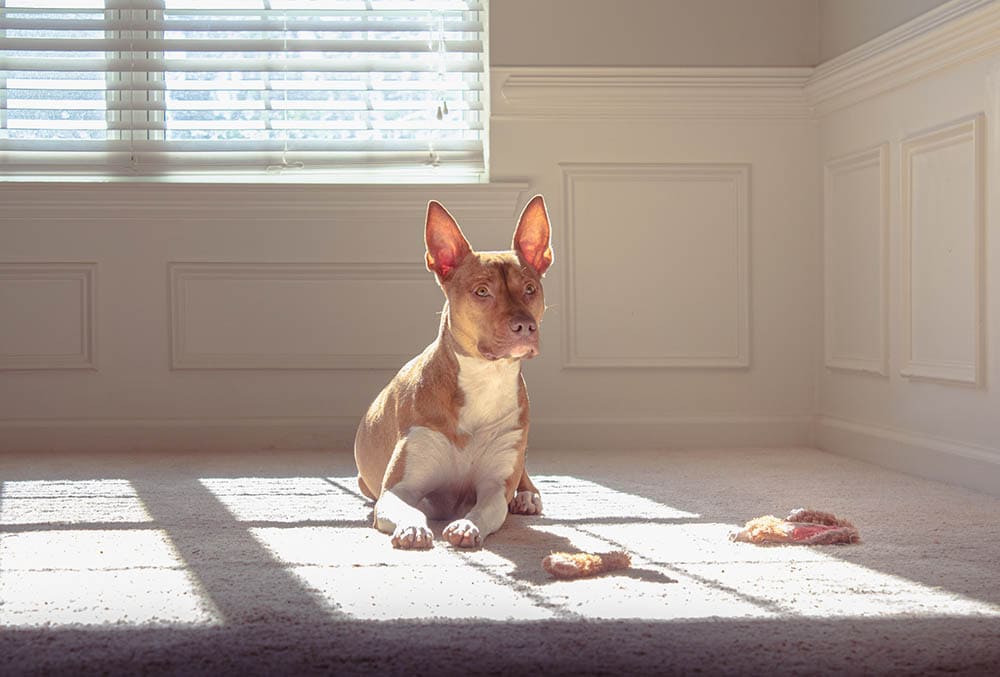
Teaching your dog to sit is one of the first things that many people try to teach their dog following potty training. However, there is a lot of conflicting advice about the best way to accomplish this goal. If you are new to dog training, keep reading while we provide you with a complete step-by-step guide for teaching your dog how to sit. We’ll learn how to keep your dog’s attention, how to get the most out of your training session, and how to have your dog following commands as soon as possible.
The 7 Steps to Teach Your Dog to Sit
Training your dog to sit is a beginner-level trick that’s perfect for new dog owners and puppies. Follow these next few steps to have your puppy sitting after a few sessions, and you can continue these methods to teach your dog other tricks.
1. Choose a Location
The first thing you will need to do when teaching your dog how to sit is to choose a comfortable location for you and the dog. It should be familiar yet large enough for the dog to move around. Most people choose the kitchen or living room. Make sure you keep the television off and minimize other distractions, including other family members walking around.

2. Choose a Time
After you choose your location, choose a time that you know you can be available each day. Your sessions only need to be 5–10 minutes long, but they need to be consistent. Holding your sessions at the same time every day will help your dog get into a routine that it comes to expect and even anticipate. Missing a day can confuse your pet and set your training back, especially in the focus department.
3. Expect to Fail at First
We are not suggesting that you try to fail or that it is hopeless to try. We’re saying you should begin your session hoping for the best but understanding that it may take several attempts to get your pet to sit at all and several weeks for it to commit the trick to memory. You should come to every session with a positive attitude and leave it the same way. Many dog breeds are extremely sensitive and will not want to continue with sessions if they feel like they are disappointing you. Keeping your expectations low will help you keep a positive attitude, and your dog will have fun and look forward to the next session—even if it hasn’t quite caught on yet.
4. Get Your Dog’s Attention
To train your dog, you will need to have its attention. The easiest way to get and keep your dog’s attention is to stand in front of your dog and hold a tasty treat that it loves, like cheese or a small piece of meat.

5. Say the Command and Gesture
As the dog tries to get the treat out of your hand, say the command “sit” as you move your hand over your dog’s head toward the tail. If you are successful, your dog’s bottom will drop to the floor as it tries to follow your hand to get the treat.
6. Positive Reinforcement
If your dog’s bottom drops to the floor as you move your hand over its head, repeating the command, say “good dog,” and give it the treat and some pats on the head.
7. Repeat
No matter the outcome, repeat the steps above several times before calling it a day. As you and your dog have more training sessions, you should notice you are successful more often, and after a while, your dog will get it almost every time—even when you are not training. However, we recommend keeping the new command to the sessions until your dog masters them.
Caution
When teaching your dog a new trick, there will come a point when it gets it several times but is not yet a master. If your dog is getting too many treats, it can begin to gain weight. Obesity is the cause of several health problems, so you will need to reduce the number of treats you provide once your dog starts to catch on to what you are doing. It will often still follow your hand even though there is no treat. Extra praise and petting can help keep them interested.
Other Dog Training Tips

Summary
When training your dog on how to sit, the steps listed above should get you the desired results. If your dog struggles to learn after 2 weeks, you might try splitting up the command and the gesture and using a clicker, but we rarely need these devices. Usually, if the dog is not learning, it’s due to too many distractions, lack of consistency in a training schedule, or getting angry at the dog. Following the steps above can also help you teach your dog other tricks as well.
We hope you have enjoyed reading over this guide, and it has helped your pup learn some new tricks. If we have helped you train your dog, please share this guide to teaching a dog to sit on Facebook and Twitter.
Featured Image Credit: ABO PHOTOGRAPHY, Shutterstock






